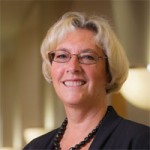This article is more than 5 years old.
I like to attend the Fall Forum of the Association of Research Libraries because they let non-ARL libraries attend and I can catch up with my ARL friends and see what they are up to. This year, the focus was on the library workforce of the future, which is of high interest to me. Those of you who have been here awhile know that when a vacancy occurs at ZSR, as often as not we tend to fill it with a different kind of position. In this way, we have created positions for a Scholarly Communication Librarian, and Systems Analyst, and Digital Initiatives Librarian, to name only a few. It turns out this is what progressive research libraries are doing also, so I was interested in hearing their perspective. These library systems are much larger than ours. The median ARL library system has 242 positions, while the three libraries at WFU have less than half of that. I will highlight only the presentations that I liked best. The website will soon have slides for all the presenters, if anyone is interested.
The first presentation I will highlight was from Tito Sierra, now at the Massachusetts Institute of Technology, but formerly of NC State. He did a research study on how research libraries are staffing for the future by examining 444 job announcements for ARL libraries for one full year. He followed up with questionnaires to determine if the positions were new, modified or existing. He learned that over half of all jobs advertised by ARL libraries in 2011 were newly created positions or had significantly redefined roles. Two thirds of Functional Specialist positions were newly created or redefined. The most dramatic moment was when he showed two word clouds. In the one created from jobs with existing roles, the largest words were Collections, Studies and Research. In the one created from jobs with new roles, the single word DIGITAL dominated all other words.
The second presentation of note was from John Seely Brown, a fairly famous person whom Wikipedia describes as “a researcher who specializes in organizational studies with a particular bent towards the organizational implications of computer-supported activities.” He is currently a Visiting Scholar at the University of Southern California and co-chair of the Deloitte Center for Edge Innovation, but previously worked at Xerox for ten years. He said that the future will be determined not by technology, but by social practice. We are about to leave a long-standing S curve of relative stability in infrastructure (cars, roads, planes, etc) for a permanent big shift to the digital world. The half life of a given skill is constantly shrinking, now down to maybe 5 years. This is why it is so important to be constantly training and retraining the work force. Higher education will be too slow. Ways of creating, working and learning must all be re-framed, which is hard. The single AHA! moment for me was when he talked about the “competency trap.” When an organization gets really, really good at something, it becomes harder for them to see new patterns and the people involved do not respond to logic when it is pointed out to them. It takes personally experienced emotion and a new, lived narrative to break out of the competency trap. Immediate examples came to my mind, and I’m sure everyone can think of their own. We need to be very careful that ZSR does not become one of them. Not to mention the liberal arts college model of higher education! Then he went up a notch and talked about Change 2.0 being a meta-narrative, with the vision and role being compelling and strategically ambiguous (everyone loved that phrase). It is ambiguous because that leaves room to make it compelling at a personal level. So the meta-narrative might be to be the best person (or library) you can be – and what that specifically means is left to the individual situation. In the Q&A, he was asked about the uncertainty in higher education today. He said that in following higher education for 30 years, he had never seen such fear and confusion as in the last six months. Presidents and governing boards are in MOOCmania. They realize the old game is up but don’t know what to do next (think UVA last summer). He said traditionally that 80% of the revenue in research universities comes from 20% of the courses and it is that 20% which MOOCs are disrupting. The perfect storm is taking shape and people are in a panic.
Overall, it struck me that our insistence on professional development, bringing new ideas in as well as sharing our ideas out, will serve us well in this period of intense change. If you can stand the ambiguity, it is good to value disruptions, rather than avoid them.
Onward.

2 Comments on ‘ARL Fall Forum: Library Workforce for 21st Century Research Libraries’
I had not heard of the “Competency Trap”. I can see how easy it would be to fall into that trap and avoid disruptions instead of valuing them!
Fascinating thoughts. MOOCmania for sure but the idea that organizations want to keep doing what they do well even when what they do well might not be what’s needed is intriguing (and absolutely dead on)…..food for thought, for sure.